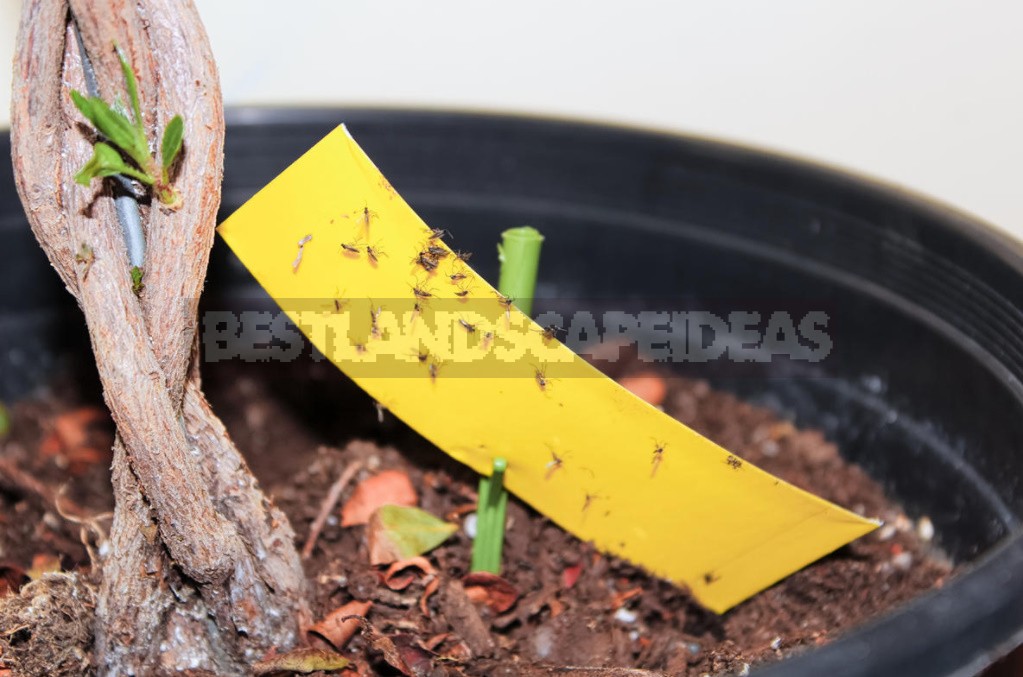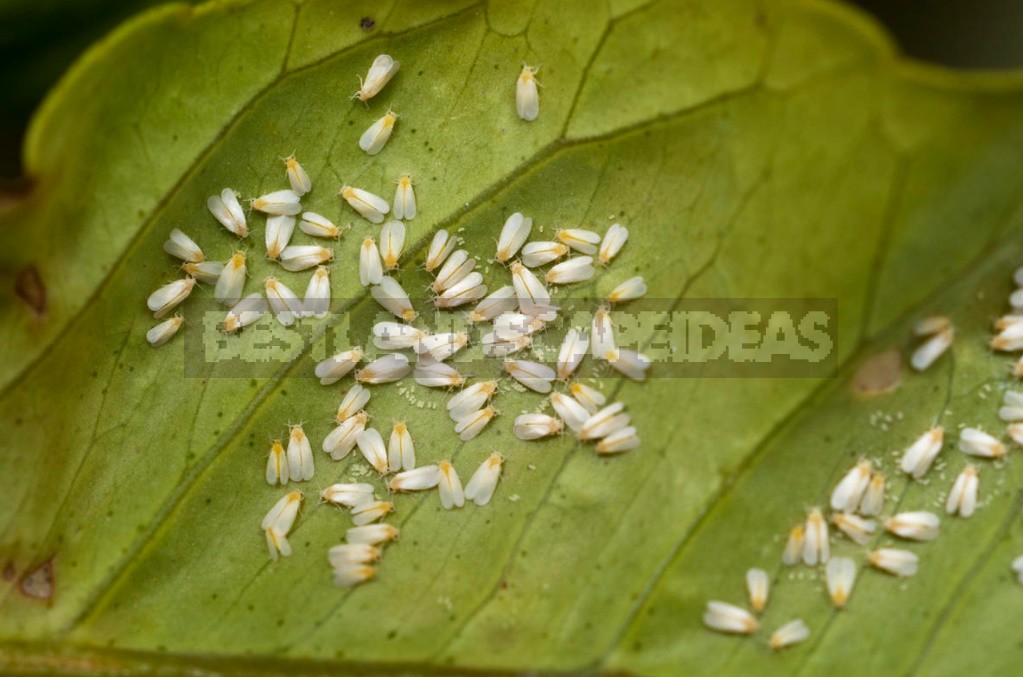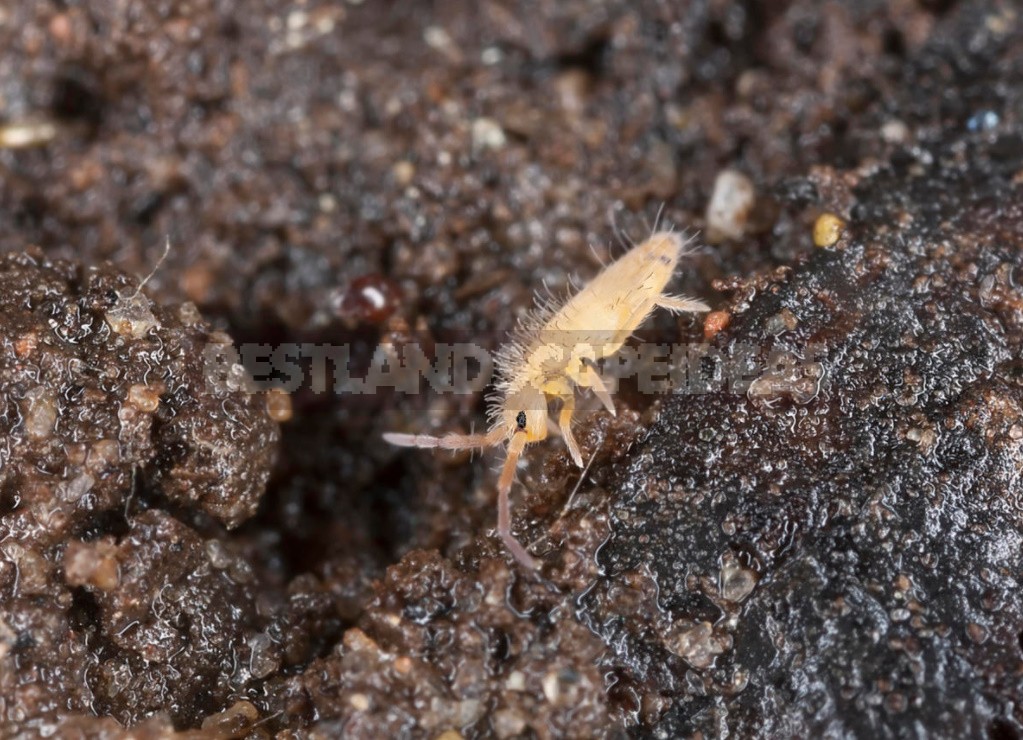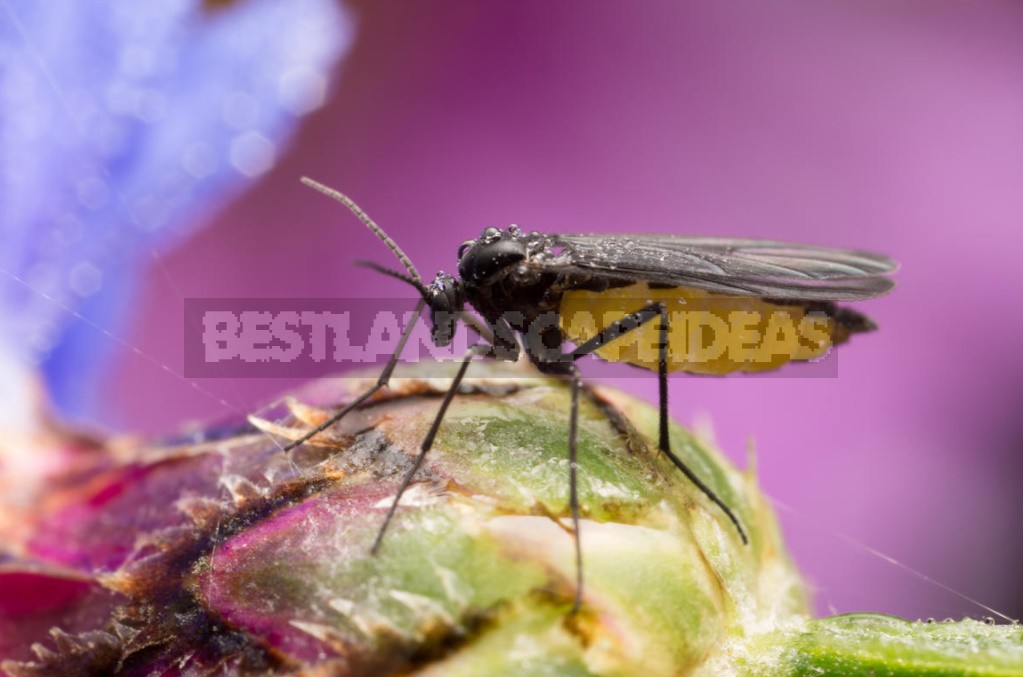
Plants in the house surprisingly transform it. They add natural colors, create comfort and improve the mood — and some bring tangible benefits. Perhaps that is why we do not limit ourselves to creating summer flower beds in the country and start green wards in apartments and houses. But even an experienced grower in indoor plants can appear midges.
Notice them usually is not difficult: around the plants stupidly rushing tiny insects, they often crawl and jump on the surface of the ground or sit on the sides of the pot. Others linger for a long time on the inside of the leaf — it is more difficult to detect them at first glance. Not all houseplants are susceptible to such pests. Most often, representatives with soft leaves and juicy stems suffer.
What are midges
To begin with, let’s figure out what kind of pests they are. And in order to make it easier for you to identify the insects that attacked your favorite flower, we suggest that they be conditionally classified according to a very simple and striking feature-color. Most often on indoor plants there are black or white midges.
White midges
These are usually whiteflies. Whitefly there are quite a few species, but houseplants are most often attacked by Bemisia tabaci, Trialeurodes vaporariorum and Dialeurodes citri. They look like snow-white or slightly yellowish tiny moths. Imagos (adults) do not cause harm, and larvae cause very great damage by gnawing on the lower part of the leaf.

In addition to the cloud of insects that appears when you touch the pot or the plant itself, you can notice a drop on the underside of the leaf plate. These are sticky sugary white spots, which are products of the vital activity of whiteflies. If you do not get rid of the pest in time,then a sooty fungus will begin to develop on the leaves — a faithful “companion” of honeydew.
In addition to whiteflies, you may notice so-called soil midges. They do not fly, but they jump very actively. This is Collembola. In nature, there are many varieties of them, but most often in indoor plants there are six-legged white or cream color. It looks like a tiny (about 2 mm in length) caterpillar with a short mustache.

In the usual agricultural regime, a certain amount of Collembola is always present in the soil of the houseplant, but they behave imperceptibly and do not cause harm. With a “successful” set of circumstances, they can simply multiply in a flurry, and then they will have to do something about it.
Black midges
Small black midges on domestic flowers are called Sciaridae. Their length varies from 0.5 to 3 mm. Just like in whiteflies, the imagos of these insects do not harm plants or people, but their larvae make their way into the ground and feed on organic residues and fungi growing on them — the soil is compacted. With mass reproduction, pests begin to use the roots of the plant as food. As a result, infected green pets do not develop well and have a wilted appearance. The most common reason for the reproduction of black midges is the fertilization of potted plants with wet sleeping tea leaves, banana peels and similar organic waste.

Do not confuse Sciaridae with another very common midge in the summer-autumn period — drosophila. For nutrition, it needs the rotting pulp of fruits or vegetables. If you remove all such products from free access, then the fruit fly will soon be gone. By the way, these insects do not harm either plants or people, so the discomfort from their presence is only psychological.

Causes of occurrence
Where do these unpleasant hangers-on of our green pets come from? The sources of infection can be different (poor-quality soil, a sick new plant, the ingress of pests from the street), but, as a rule, the active reproduction of midges indicates first of all errors in care.
All of these parasites actively proliferate in the wet environment and the stagnant air. Filled the plant, the water that collects in the pan is what they need in the first place. Therefore, all midges are indicators of incorrect agricultural technology.

Ways to fight
Taking into account the above, the first measure to combat any midges — drying the soil-suggests itself. Some plants can withstand the complete drying of the soil without consequences, therefore sometimes this becomes the only and sufficient procedure to get rid of parasites. Other green pets need to choose the right watering mode, in which the top layer of earth in the pot will dry up. You can mulch the plant with sand, fine screening of expanded clay or decorative glass granules.
Timely removal of water from the pan is another obvious step. Good drainage will prevent stagnation of water in the depth of the flower container and will have a beneficial effect on the harmonious development of the root system of the plant, as well as on reducing the number of leg-tails to an acceptable level.

The next step concerns the control of flying adult insects. You need to try to reduce their number by catching them on sticky traps (purchased tapes — or homemade, made of paper and honey) or using a regular vacuum cleaner. Let the imagos do not cause harm, but they lay eggs, including flying to neighboring plants and infecting them.
Whiteflies can be removed with a soft cloth or sponge soaked in soapy water. Or-arrange a cold shower for the plant, thanks to which a significant part of the moths will be destroyed.

Another tool is a fumigator. It works well against whiteflies and Sciaridae. Only 1-2 days of operation of the device will not be enough — it is better to use it for at least a week, then all newly emerging insects from the larvae will be destroyed. It is better to place the fumigator in close proximity to pots with flowers.
If you assume that the parasite is brought with the soil, then transplanting the plant with a complete replacement of the soil and washing the roots will help to get rid of it. However, this often involves a lot of money, effort and time, so you can try to cope in other ways.

People’s ways of dealing with lice
To combat midges, various folk remedies have been tested and used.
- Matches. In the dried ground, you need to stick matches with sulfur heads down, the soil — a little moisten. As the heads dissolve, change the matches.
- Ammonia. Prepare the solution in the proportion of 50 ml of the drug per 4 liters of water. We water the indoor plants, while getting rid of the larvae and carrying out nitrogen fertilization. The same solution can be sprayed with green pets from flying individuals. Repeat watering and spraying every 7-10 days until complete disposal of parasites.

- Potassium permanganate. A pale pink watering solution is used. At the same time, it strengthens the plants.
- Citrus peel, bay leaf, garlic, tobacco. These strong-smelling products can be spread out on the surface of the soil — or make an infusion of them. Garlic take 3 cloves, grind and insist in 1 liter of water. Then the solution is filtered and the soil is watered. An infusion of tobacco is made as follows: 40 g of raw material is poured with 1 liter of boiling water, allowed to cool completely and used for irrigation.

If you have a problem-there are midges in indoor plants-then you should not delay with its solution. At the very beginning, when there are still not many pests, it will be easy to cope with them with folk remedies. It is important to understand the reason for the appearance of parasites — and try not to make any more mistakes. Or maybe you know some other effective tool that confidently copes with midges? Share with us in the comments — flower growers will say thank you!




Leave a Reply